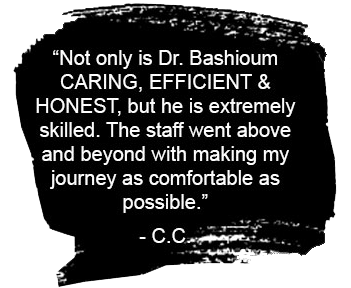Technology Innovations: Breast Enlargement
June 28th, 2011
As I mentioned last week, I attended the Technology Innovation in Plastic Surgery Conference in San Francisco. I believe that new techniques and technologies in field of cosmetic surgery will change dramatically in the next five years.
Some of these new innovations involve carefully harvested fat injections. A promising procedure involves using fat harvesting for breast enlargement. Liposuction fat is transferred from one area to anther after it has been specially processed. Augmenting the breast with the body’s own fat first became popular in the 1980’s. Initially, both ASPS and ASAPS urged caution. The current procedure has been perfected and gives patients another option when considering breast enlargement.
In the past, there were concerns whether fat injections may calcify, or harden, and interfere with traditional mammograms and breast cancer screenings. 

More recently, radiology literature suggest that new generations of digital mammography is more sophisticated and better able to distinguish troublesome cells.
Some noteworthy facts about this innovative procedure include needing only pinpoint marks at the injection sites, because no incisions are made in the breast. Patients are also free to discard implant rupture concerns and benefit from reduced risk of breast firmness or numbness. However, more than one procedure might be required to achieve the desired result and this new fullness may fluctuate with weight gain or loss.
This series continues.
Facelift: What’s in a Name?
March 15th, 2011
What’s in a name? I find it interesting that new terms used for cosmetic surgery procedures may often gloss over the seriousness of the surgery. The current euphemisms being used for a facelift are prime examples. As a result of this new terminology, I find patients do not want to hear that they need a facelift to correct their jowls or turkey neck. They prefer to hear words like facial rejuvenation, mini-lift, lower facelift, lunch-time lift, short incision facelift, short recovery facelift or better still (my favorite) the non-surgical facelift! A market driven economy has helped to put a happy face on anti-aging procedures, by trivializing this surgery to increase profits.
According to The American Society for Aesthetic Plastic Surgery, there were about 95,000 performed last year. Regardless of the trendy name, surgery is serious business. There is an element of swelling and bruising after facelift surgery, as with most facial procedures. It is difficult to cover or hide during the initial recovery period. For this reason, many patients choose not to be seen while they are recovering from a facelift. In a culture where youthful beauty is celebrated, few of us want to submit eagerly to the effects of aging. Surprisingly some patients are not self-conscience in the least and continue with all their social engagements.
Facelifts are also combined with many other facial procedures (nose surgery, eyelid surgery, facial implants, chemical and laser peels, and forehead lifts). When procedures are added to a facelift, it increases the amount and duration of swelling following surgery. Combining surgeries also increases risk factors. Because of the additional safety concerns, I strongly discourage patients from combining surgeries in my own practice.
